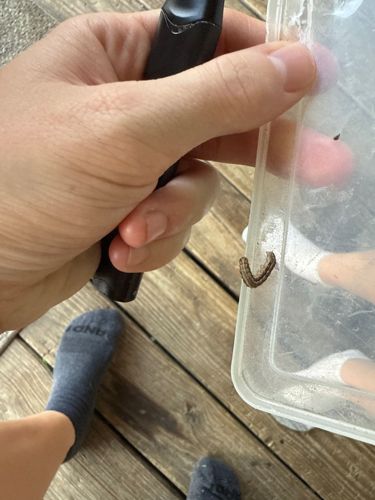Looper Caterpillar (likely a species of Cabbage Looper or similar)
Scientific Name: Trichoplusia ni (Cabbage Looper is a very common species with this appearance, though exact species identification without closer inspection is difficult from this image alone)
Order & Family: Lepidoptera, Noctuidae (or Plusiinae subfamily within Noctuidae)
Size: Larvae typically range from 2.5 to 4 cm (1 to 1.5 inches) in length when fully grown. Adult moths have a wingspan of 2.5 to 4 cm (1 to 1.5 inches).

Natural Habitat
Agricultural fields, gardens, nurseries, and other areas where host plants are abundant. They are found worldwide.
Diet & Feeding
Larvae (caterpillars) feed on a wide variety of plants, including many common garden vegetables like cabbage, lettuce, broccoli, cauliflower, and various field crops. Adults (moths) feed on nectar.
Behavior Patterns
Loopers move with a distinctive 'looping' motion, arching their bodies to bring their rear prolegs up to their true legs before extending forward again. They are primarily nocturnal feeders and will often drop to the ground or feign death when disturbed. The adult moths are also typically nocturnal.
Risks & Benefits
Potential risks include significant damage to agricultural crops and garden plants, leading to economic losses for farmers and frustration for gardeners. They can defoliate plants and render produce unmarketable. Benefits are limited, though they can be a food source for some predatory insects and birds, and the adult moths contribute to pollination.
Identified on: 8/12/2025